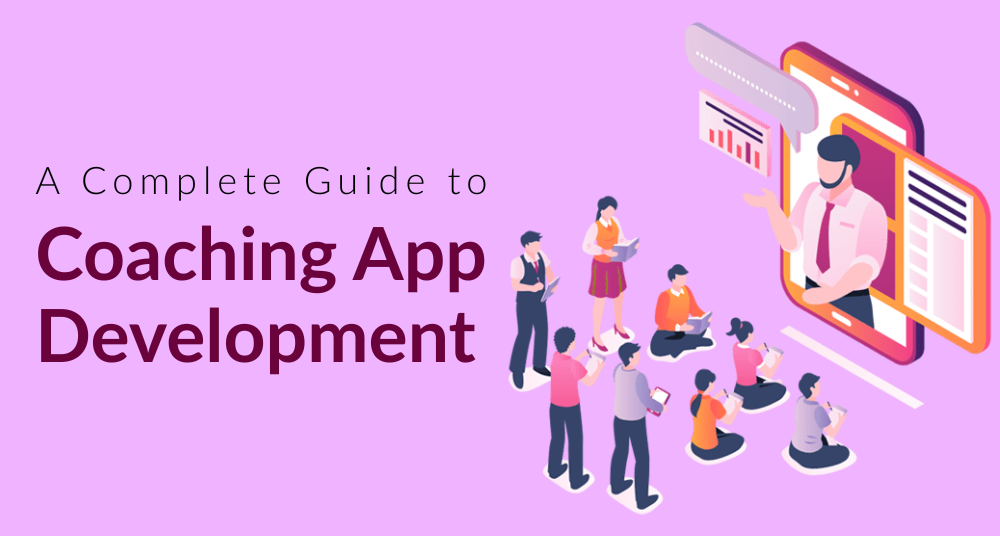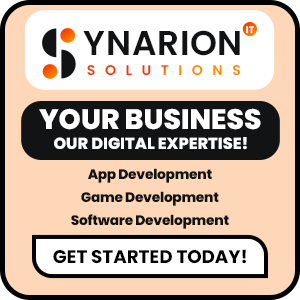In today’s digital age, education is no longer confined to classrooms. From skill-based training to competitive exam preparation, digital coaching platforms are changing how students learn and how teachers teach. Smartphones and internet access have made it possible for learners to access knowledge anytime, anywhere.
If you are an educator, institute, or entrepreneur, building your own coaching app can help you connect with a wider audience, enhance engagement, and create new revenue opportunities.
This comprehensive guide covers everything you need to know about coaching app development — from features and benefits to the development process and best practices.
Why Coaching App Development is the Future
The global e-learning market is expected to cross $11 billion by 2032, driven by the need for accessible and flexible education. Students now prefer mobile learning — a format that allows them to study at their own pace, anywhere in the world.
Key benefits of coaching apps:
- Learn anytime, anywhere
- Personalized learning experience
- Cost-effective for students and educators
- Easy to scale for institutes
- Real-time progress tracking
For teachers and institutes, these apps provide an opportunity to reach thousands of learners without geographical limitations.
What is a Coaching App?
A coaching app is a mobile or web-based platform designed to deliver structured learning through videos, live classes, tests, and performance analytics. It allows educators to manage lessons, track progress, and engage with students in real time.
Popular types include:
- Competitive exam preparation apps (UPSC, NEET, IIT-JEE)
- Skill development and coding apps
- Fitness, wellness, and sports coaching platforms
- Professional certification and corporate training apps
Essential Features of a Coaching App
The success of any coaching app depends on its usability and feature set. Here are the must-have components every modern learning platform should include:
1. User-Friendly Interface
A simple and intuitive dashboard for students and instructors helps improve usability.
- For students: Easy course access, progress overview, and notifications.
- For teachers: Tools to upload lessons, manage students, and track analytics.
2. Live Classes and Video Integration
Include high-quality video streaming and live class options. Features like screen sharing, chat, and virtual whiteboards enhance classroom interaction.
3. Learning Management System (LMS)
An LMS serves as the foundation of the app. It should allow instructors to:
- Create and manage courses
- Upload notes and multimedia content
- Assign quizzes and track results
- Automate grading and reporting
4. Assessment and Reporting
Assessment features help students evaluate their progress and educators to monitor performance.
Add auto-graded tests, progress dashboards, and feedback systems.
5. Interactive Learning Tools
Enhance engagement with:
- Gamification (badges, levels)
- Flashcards and quizzes
- Group discussions and leaderboards
These elements make learning more fun and effective.
6. Chat and Community Support
Real-time chat and discussion forums enable better communication. Teachers can answer queries, while students can exchange ideas.
7. Offline Learning Mode
Allow learners to download lessons for offline access — especially helpful in low-network areas.
8. Multi-Device Accessibility
Ensure the app runs seamlessly on smartphones, tablets, and desktops. Synchronization between devices enhances convenience.
9. Secure Payment Gateways
Integrate safe and easy payment options such as UPI, credit cards, wallets, or net banking. Offer subscription plans, course bundles, and promotional discounts.
10. Notifications and Reminders
Push notifications can remind students of upcoming classes, new lessons, or limited-time offers. Timely alerts increase engagement.
11. Analytics Dashboard
Data-driven insights help teachers improve course content and engagement. Analytics may include:
- Time spent per lesson
- Quiz scores
- Course completion rate
- Attendance and feedback
12. Admin Panel
The admin panel should offer full control over users, payments, and course management. It ensures transparency and smooth operations.
Benefits of Building a Coaching App
Building a custom coaching app offers multiple benefits for educators, learners, and institutions.
Global Reach
Coaching apps remove geographical boundaries, enabling teachers to reach students across cities, countries, and even continents.
Improved Student Engagement
Interactive tools, real-time feedback, and personalized dashboards keep learners motivated throughout their journey.
Brand Recognition
Having your own branded app enhances trust and credibility. It helps your coaching institute stand out in a competitive market.
Automated Management
Administrative tasks such as attendance, payment tracking, and class scheduling become automated — saving time and reducing manual errors.
Flexible Monetization
Monetize your app through:
- Subscription plans
- One-time course purchases
- Certification fees
- Advertising collaborations
Personalized Learning Experience
AI-powered recommendations and adaptive tests help deliver customized learning experiences based on each student’s progress.
Cost and Time Efficiency
Once the app is developed, it minimizes physical classroom expenses and streamlines operations.
Steps to Develop a Coaching App
Building a coaching app involves careful planning and execution. Here’s a step-by-step breakdown:
Define Your Target Audience
Identify whether your app will cater to school students, college aspirants, working professionals, or skill learners.
Select Key Features
Decide what features align best with your educational model — video lectures, live chat, quizzes, or downloadable resources.
Choose the Right Technology Stack
Technologies like Flutter, React Native, Node.js, and Firebase are commonly used for scalable app development.
Design the User Interface
A clean, simple, and responsive UI improves user satisfaction. Focus on easy navigation and visually appealing layouts.
Develop and Integrate
After finalizing the design, developers begin coding and integrating essential systems such as payment gateways, LMS modules, and analytics tools.
Test Thoroughly
Testing ensures the app runs smoothly across devices and networks.
Check for speed, performance, and security before launch.
Launch and Promote
Once ready, launch your app on Google Play and the App Store. Promote it through digital marketing, social media, and collaborations with influencers or institutes.
Maintenance and Updates
Post-launch support is crucial. Regular updates improve functionality, fix bugs, and keep your app compatible with new OS versions.
How to Choose the Right Coaching App Development Partner
Partnering with an experienced app development company ensures your app meets industry standards and user expectations.
Here’s what to look for:
- Proven experience in education technology (EdTech)
- Expertise in mobile and web development
- Strong UI/UX design capabilities
- Transparent communication and pricing
- Dedicated post-launch support
Companies like Synarion IT Solutions have a solid track record in developing high-performance learning platforms, but you should always choose a team that aligns with your vision, budget, and technical requirements.
Monetization Models for Coaching Apps
Once your coaching app is live, there are several ways to generate consistent revenue:
- Subscription Plans: Offer monthly or yearly memberships.
- Freemium Model: Free access to some content; charge for premium lessons.
- Course Sales: One-time payments for individual courses.
- Advertisements: Partner with education-related brands.
- Certifications: Charge for completion certificates or skill badges.
Cost of Developing a Coaching App
The development cost depends on multiple factors:
- App type (basic, advanced, or enterprise-level)
- Platform (Android, iOS, or both)
- Features and integrations
- Development time and location of the team
On average, a basic coaching app may cost between $10,000–$25,000, while a feature-rich platform can range from $30,000–$80,000+.
Trends Shaping Coaching App Development in 2025
The education industry is evolving rapidly. Here are a few trends defining the future:
- AI-powered learning recommendations
- AR/VR-based virtual classrooms
- Gamified learning journeys
- Voice and chatbot assistance
- Data-driven personalization
Adopting these technologies early will give your app a strong competitive edge.
10 Coaching Apps Changing the Way We Learn!
- Unacademy
- Udemy
- Coursera
- Khan Academy
- Simplilearn
- Teachmint
- Aakash App for JEE & NEET
- Vidyakul Online Classes 9-12th
- PW -JEE/NEET, UPSC, GATE, SSC
- Motion Learning App
Conclusion
The future of education lies in digital coaching apps that make learning engaging, accessible, and effective. Whether you are a coaching institute or an independent tutor, investing in a customized mobile app will help you reach a global audience, streamline operations, and scale your business faster.
With a well-planned strategy, modern technology, and the right development partner, your coaching app can become a powerful tool for both teaching and learning in 2025 and beyond.
Related Blog: eLearning App Development Guide






What do you think?
It is nice to know your opinion. Leave a comment.